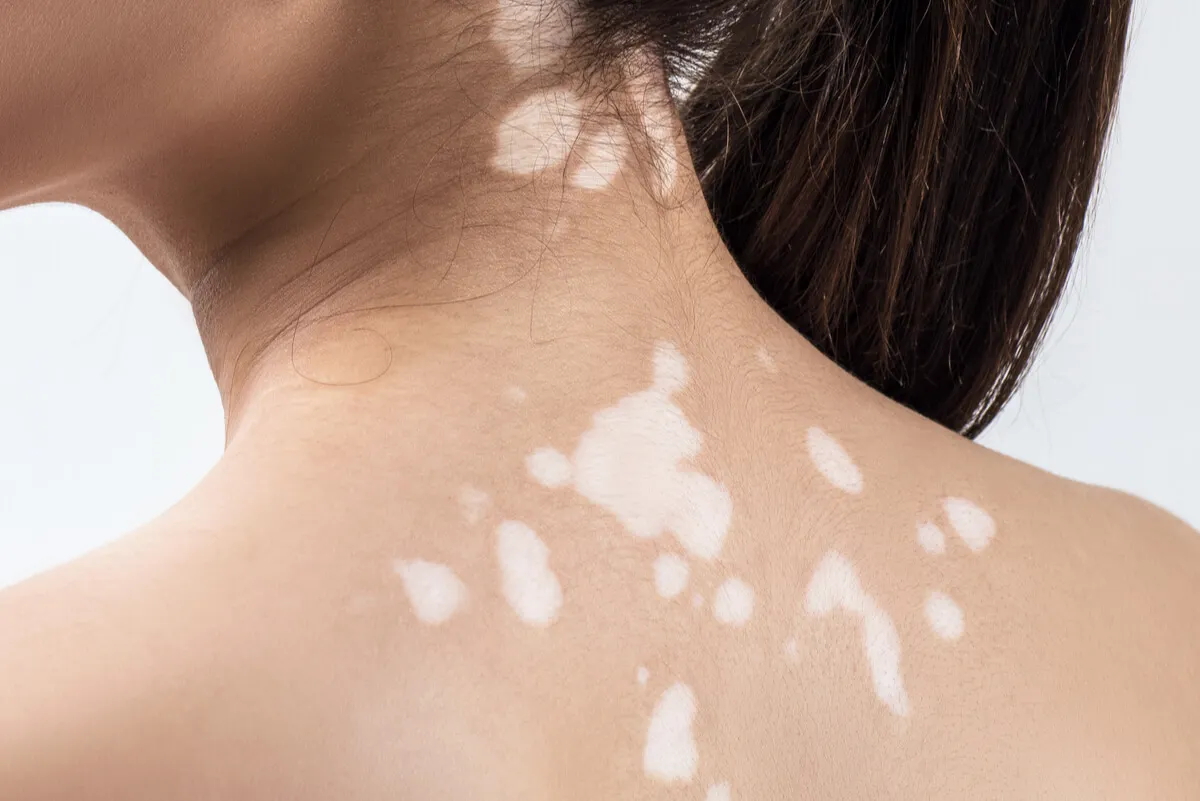10 Diseases that Cause White Patches on The Face


Reviewed and approved by the nurse Leidy Mora Molina
White patches on the face are caused by many reasons. Sometimes they are due to harmless problems, such as mycosis or freckles. Other times, the issue may be related to something more serious, such as dermatitis or vitiligo.
Therefore, white patches on the face are not an issue that you should just let go. It’s necessary to observe them, look for other symptoms that may accompany them, and consult a dermatologist.
If the white patches on the face are accompanied by flaking of the skin or itching, the best thing to do is not to put off consulting a specialist. Early attention is the best way to prevent more serious problems.
Diseases that cause white patches on the face
There are several diseases and conditions that lead to white patches on the face. Among the most common are the following.
1. Pityriasis Multicolor or Pityriasis Versicolor
Pityriasis multicolor is perhaps the most common cause of white patches on the face. Although these light patches are usually located on the torso and arms, they are not uncommon on the face either.
Sometimes they are light in color, but they can also be brown or pink. The origin is a fungus and it occurs more frequently in the summer.
We think you may be interested in reading this, too: How to Treat a Sunburned Face with Natural Remedies
2. Pityriasis alba
This is a disease that first generates red spots, as well as itching and scaling. After the red patches disappear, they leave white patches on the face or other areas of the body.
These patches have scales and a slight bluish tint. It’s rare and occurs mostly in children.

3. Guttate hypomelanosis
Guttate hypomelanosis is the technical name given to well-known sunspots. They arise where skin pigment has been lost.
So there may be white patches on the face or other areas of the body. They measure 1 to 3 millimeters and science still does not explain the exact cause. They almost always occur in fair-skinned people who are frequently exposed to the sun.
4. Vitiligo
Vitiligo is another disease that causes white spots on different parts of the body. It usually appears first in the areas most exposed to the sun.
It sometimes spreads slowly, but can also spread rapidly. It’s believed to be an autoimmune pathology with genetic roots. It’s more common in middle-aged adults.
5. Milia
In the case of this disease, there are not only white patches on the face, but these also have a certain volume. These bumps are rarely larger than 2 millimeters.
They are formed by the accumulation of oil and dead skin cells, which are filled with keratin, under the surface of the skin. This results in a plug that shows through the skin. Milia has a fairly regular presence on tattoos.
6. Sebaceous hyperplasia
This disorder corresponds to an atypical growth of the sebaceous glands. These are found in the deeper layers of the skin and produce sebum, a substance that lubricates the skin.
When enlarged, they exert pressure and create a white, yellowish, or colorless bump on the skin surface. This problem is more common in people over the age of 40.
7. Sebaceous cysts
Sebaceous cysts are very similar in appearance to sebaceous hyperplasia bumps. The difference is that the cysts move when pushed with the fingers, while the other bumps stay firmly in place.
They look like a small ball of water under the skin. When they grow too big they can cause pain.
Like this article? You may also like to read: Anti-contouring: The Makeup Trend that Prioritizes the Naturalness of the Face
8. Seborrheic keratosis
Seborrheic keratosis also belongs to the group of diseases that cause white patches on the face with volume. They grow to be more than one inch in diameter.
They change color over time and turn brown. Their appearance is like a drop of wax stuck to the skin. They are more common in middle-aged or older adults.
9. Xanthelasma
The characteristic of this disease is the appearance of small bumps on the eyelids or around the eyes. These are irregular and sometimes have a yellowish hue.
They are believed to be the result of a high level of cholesterol in the blood. In fact, they are fatty deposits that are concentrated under the surface of the skin.
10. Skin cancer
Basal cell skin cancer may begin with the formation of a pearly white bump, but it may also have other colors, such as pink, red, or brown. Also, sometimes there are white patches on the face or other areas. These are rough and scaly. They look like sores that will not heal.

Treatment options for white patches on the face
Treatment for conditions that cause white patches on the face depends on the type of condition and its level of severity. Sometimes it’s possible to use over-the-counter products, such as salicylic acid or topical retinoids.
Other times manual removal is required, in the case of bumps. Also, specific medication or more complex approaches with surgery, cryotherapy, immunotherapy, or chemotherapy may be needed.
Whatever the cause, the truth is that whenever white patches appear on the face, it’s best to consult a physician. Remedies or solutions should not be attempted without a diagnosis and professional approval.
If the white patches on the face appear very suddenly or spread rapidly, consultation is urgent. Likewise, if they occupy a large area, grow without stopping, itch, bleed, hurt, or remain for a long time without going away.
All cited sources were thoroughly reviewed by our team to ensure their quality, reliability, currency, and validity. The bibliography of this article was considered reliable and of academic or scientific accuracy.
- Giacaman, A., del Pozo, L. J., Corral-Magaña, O., & Antón, E. (2017). Milia in a multicolored tattoo: dermoscopic findings. Medicina Cutánea Ibero-Latino-Americana, 45(1), 72-74.
- Mendez Mathey, V. E. (2017). Queratosis seborreica. Revista Medica Herediana, 28(4), 266-266.
- Mazzeo, M., Manfreda, V., Diluvio, L., Dattola, A., Bianchi, L., & Campione, E. (2019). Análisis dermatoscópico de 72 queratosis seborreicas «atípicas». Actas Dermo-Sifiliográficas, 110(5), 366-371.
This text is provided for informational purposes only and does not replace consultation with a professional. If in doubt, consult your specialist.








